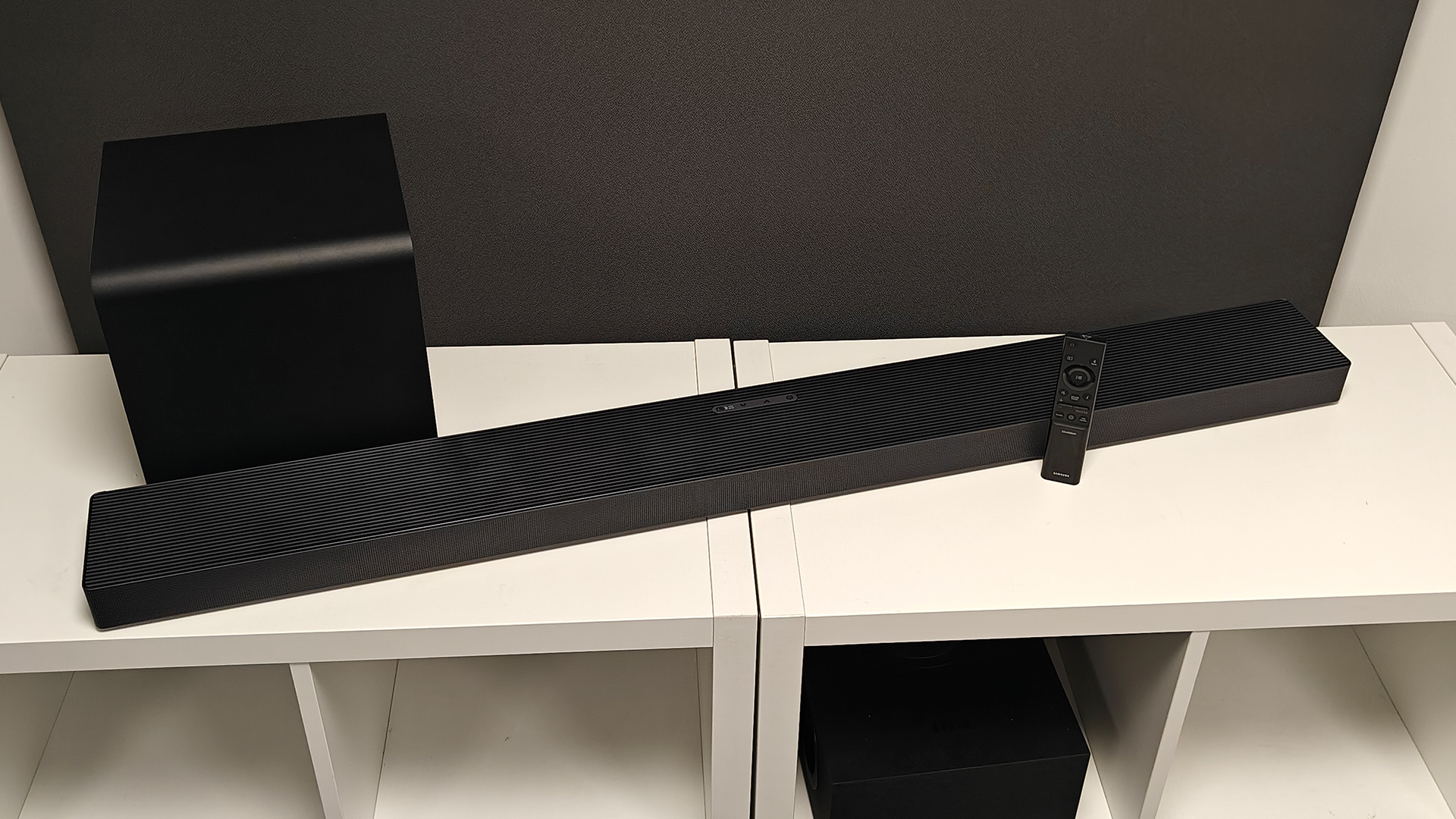What Hi-Fi? Verdict
The DG-X turntable package is a bold, mature step forward that combines clever engineering, stylish build and its innate rhythmic abilities in a thrilling way
Pros
- +
Excellent rhythmic drive and dynamic expression
- +
Greater refinement, textural depth and space
- +
Impressively stable and muscular sound
- +
High build quality and finish
- +
Easy to use
Cons
- -
Dust cover doesn’t feel very premium
Why you can trust What Hi-Fi?
Vertere Acoustics’ high-end turntables have dazzled us with their outstanding rhythmic and dynamic expression and innovative engineering.
But what impresses us even more is how this brand dares to think differently when it comes to its ‘entry-level’ Dynamic Groove (DG) model. Instead of simply scaling down the higher-end MG-1 or SG-1 models and using cheaper materials, Vertere takes a completely fresh approach with the DG model in a bid to hit the (relatively) lower price point.
We tested the outgoing model, Vertere DG-1 S, at £3550 / $4995 / AU$7000 with its Magneto MM cartridge; the new DG-X model on test here with a new tonearm and cartridge will cost you £4150 / $5400 / AU$8500.
To put it in context, the next step up, the MG-1 MkII, starts at around £11,000 / $13,495 / AU$22,000.
Put the two DG models side by side, and you’ll be forgiven for thinking they look the same. They may look very similar on the outside, but the third-generation DG-X has been completely redesigned from the ground up.
Along with the aim of improving the performance, Vertere was also adamant about maintaining this price point. So the brand took a fresh look at the design and, with lessons learned over the production of the previous models, found ways to improve the turntable's assembly process – ultimately making it more efficient to manufacture, and thereby saving costs.
Design & engineering
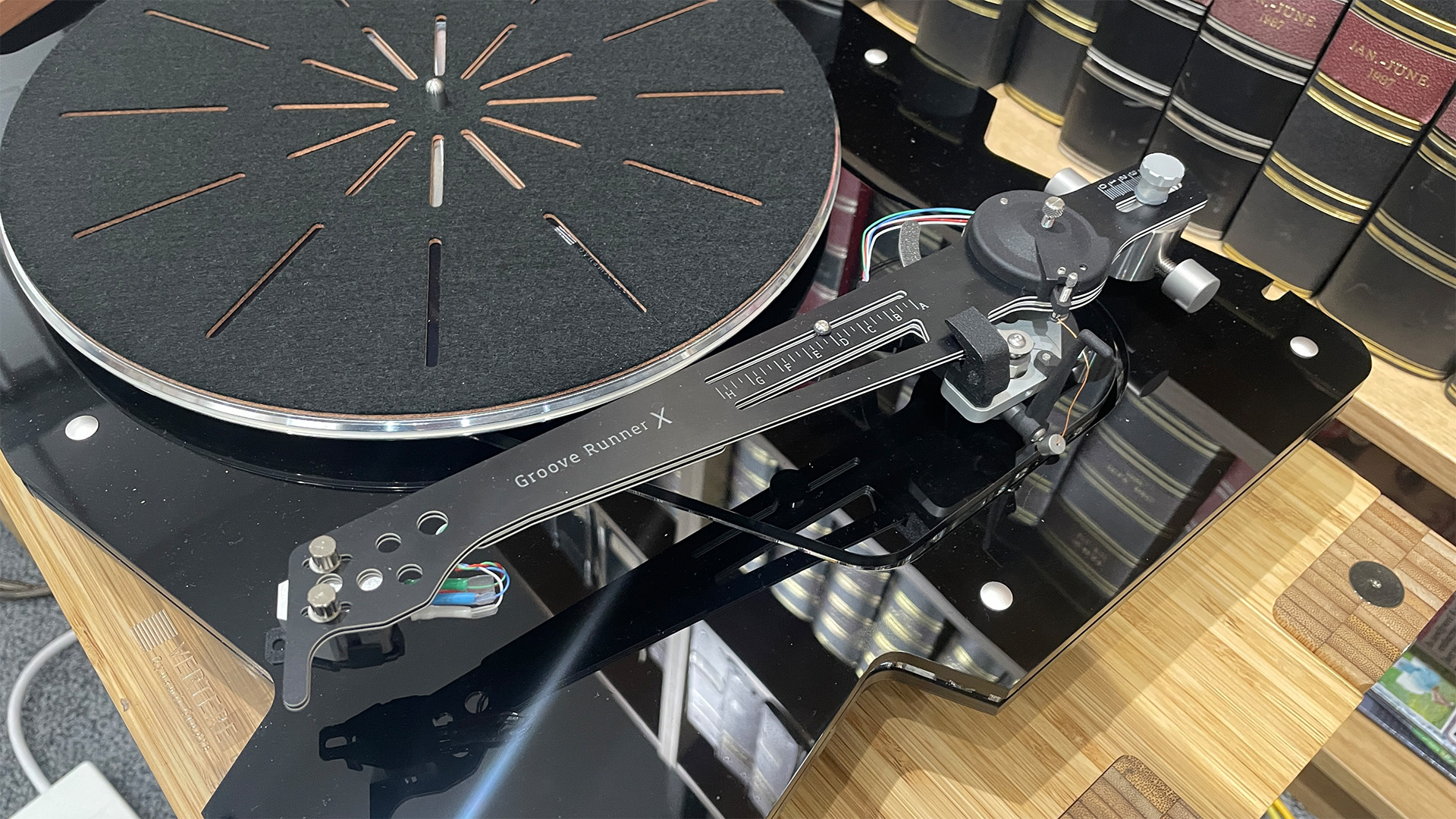
Along with the objective of a quicker manufacturing process, the DG-X turntable has some significant upgrades for improving sound, starting with a completely new tonearm design.
The latest hi-fi, home cinema and tech news, reviews, buying advice and deals, direct to your inbox.
While it retains its innovative flat design made of two bonded pieces of five-layered polymer – which aims to avoid the resonances found in conventional metal tube arms and offers greater stability for the cartridge – the bearing design has been completely overhauled.
Instead of nylon and Kevlar threaded bearings used in previous models, the new Groove Runner X tonearm features what would traditionally be called a unipivot design, but with a twist. Here, the unipivot point is securely located with a trio of precision silicon nitrate balls, which means that rather than skating around (at a microscopic level) as it would in traditional unipivot designs, this keeps the point more firmly located.
The result is a more stable tonearm and a better base for the cartridge to work from.
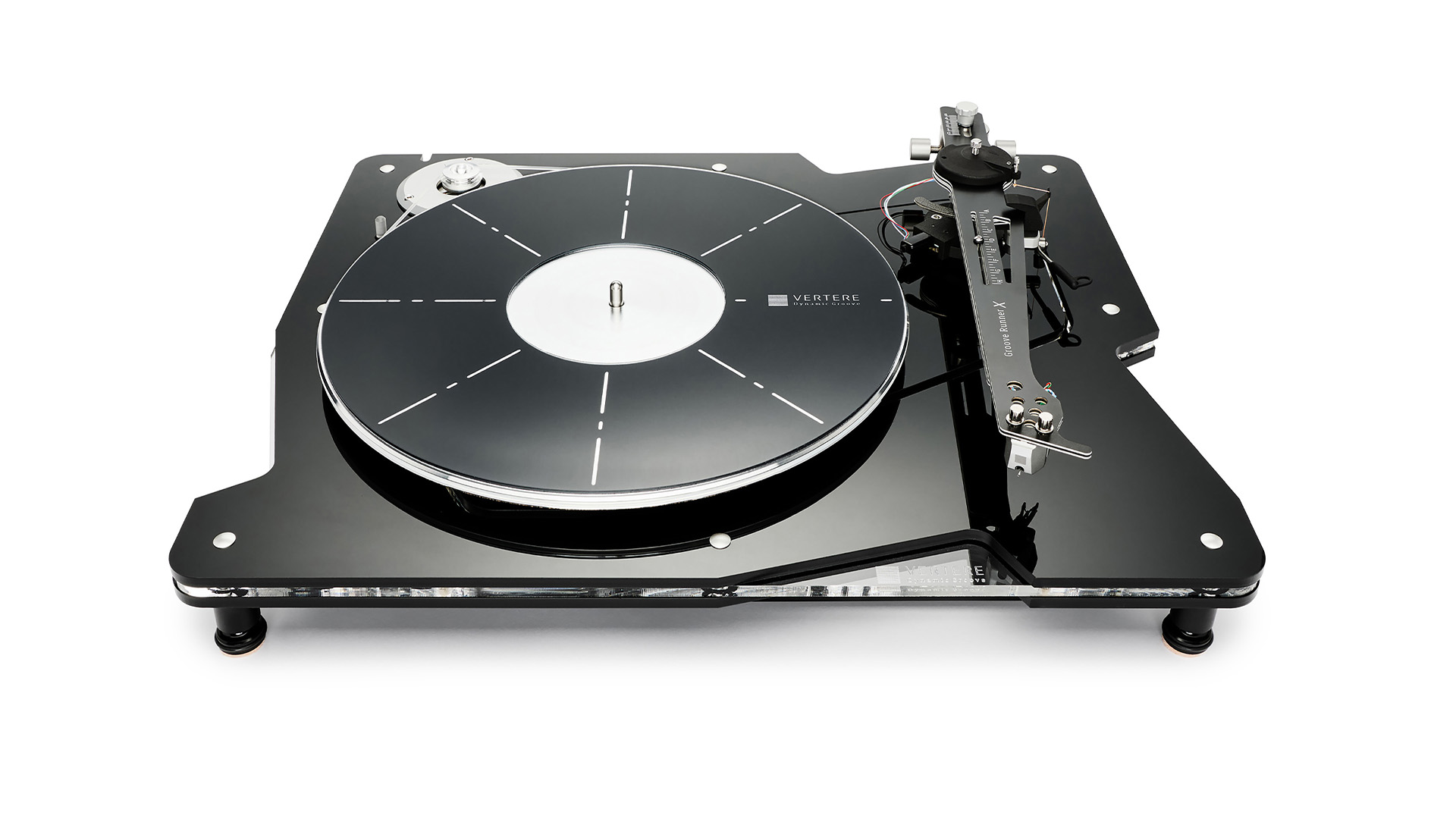
Type Belt drive
Operation Manual
Speeds 33⅓, 45 RPM
Speed change Electronic
Cartridge Vertere Sabre Lite MM
Phono stage? No
Bluetooth? No
USB? No
Dimensions (hwd) 11.7 x 44.7 x 36cm
Weight 6kg
Finishes x 3 (gloss black, gloss white, gloss red)
Another aim of the DG-X is to be as plug and play as possible, so the tracking weight, bias, VTA and azimuth are all now factory set when choosing a pre-fitted Vertere cartridge, meaning you don’t have to adjust or set up anything after getting the turntable out of the box.
It’s a nice touch that makes using the DG-X even easier than before.
Speaking of the cartridge, the entry-level Magneto moving magnet cartridge (£275 / $399 / AU$575) of the previous model has been swapped for a completely new Sabre Lite model (£495 / $699 / AU$1125) for the DG-X.
It is a step-up from the Magneto and brings the performance closer to that of the superb, five-star Sabre MM cartridge.
There is, of course, scope to upgrade the cartridge to any model you wish, and the DG-X’s tonearm adjustments allow you to fit and optimise the arm for a wide variety of cartridges.
The auxiliary tracking weight at the centre of the flat arm returns, which lets you fine-tune the arm's mass to its partnering cartridge.
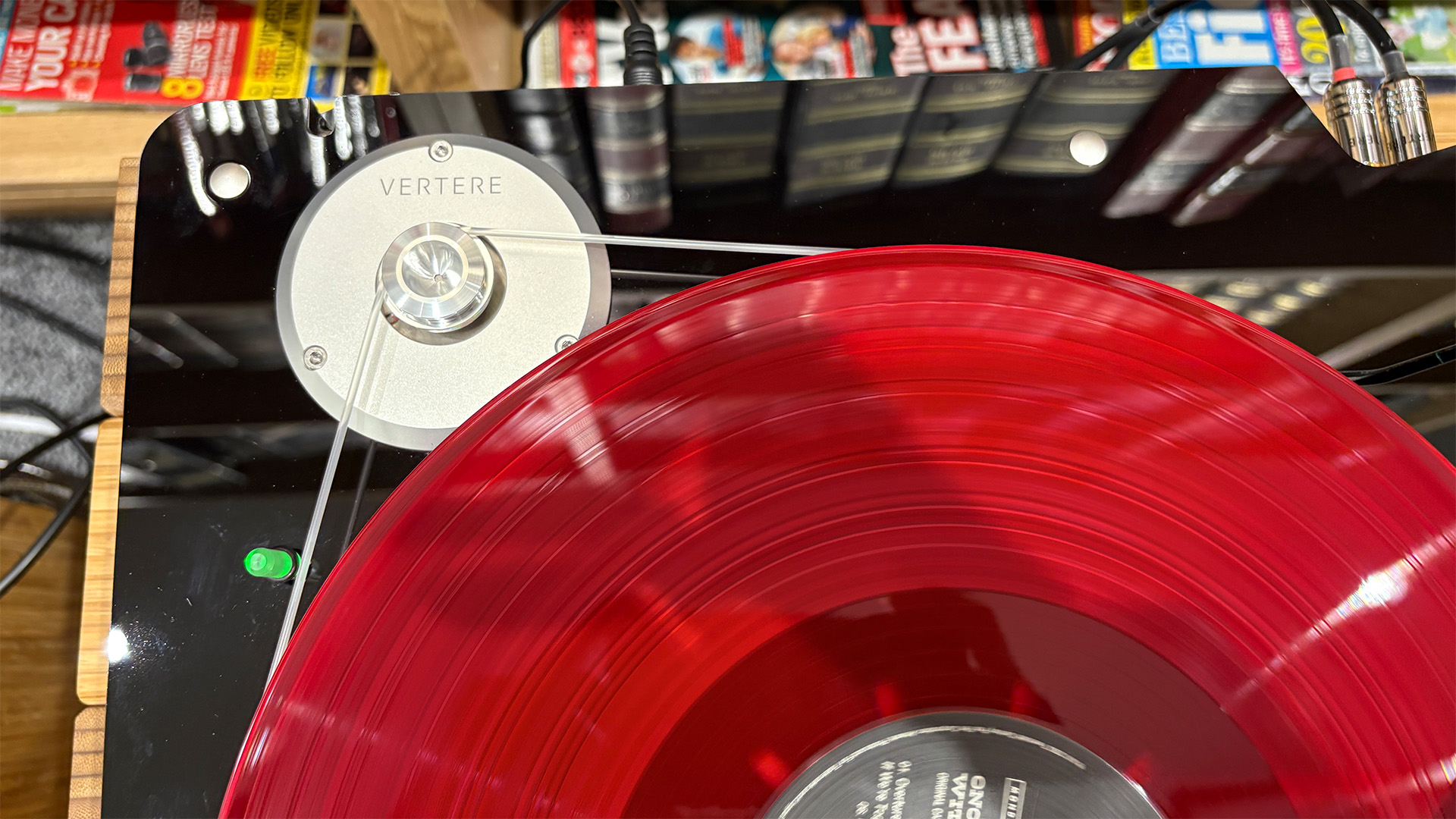
What else is new? The mounting plate for the motor has been updated, the grounding has been improved, and so has the power button, which we previously complained about being too close to the belt and main platter. It’s still the same distance, but it is now taller, making it much easier to operate.
Pushing this illuminated button lets you control the speed electronically, too: green for 33⅓, red for 45 RPM.
In previous generations, you could improve the DG deck by adding the step-up DC2 power supply (£195) and Techno Mat (usually £170 / $249 / AU$345), but these are now included as standard with the DG-X.
You can play a vinyl record without the mat as the top surface of the DG’s platter is smooth enough, but Vertere says it sounds better with the Techno Mat involved – we found this to be true during testing, too.
Considering the scope of changes and new elements in this turntable package, the price increase between the two generations of DG models doesn’t look quite that big anymore. In fact, if you added the separate elements (power supply, mat, new cartridge) together, the total for the last generation is higher.
That Vertere has been able to make such significant changes – both in the manufacturing process and engineering design – while sticking to its below-£5000 price point is rather remarkable.
Build & compatibility
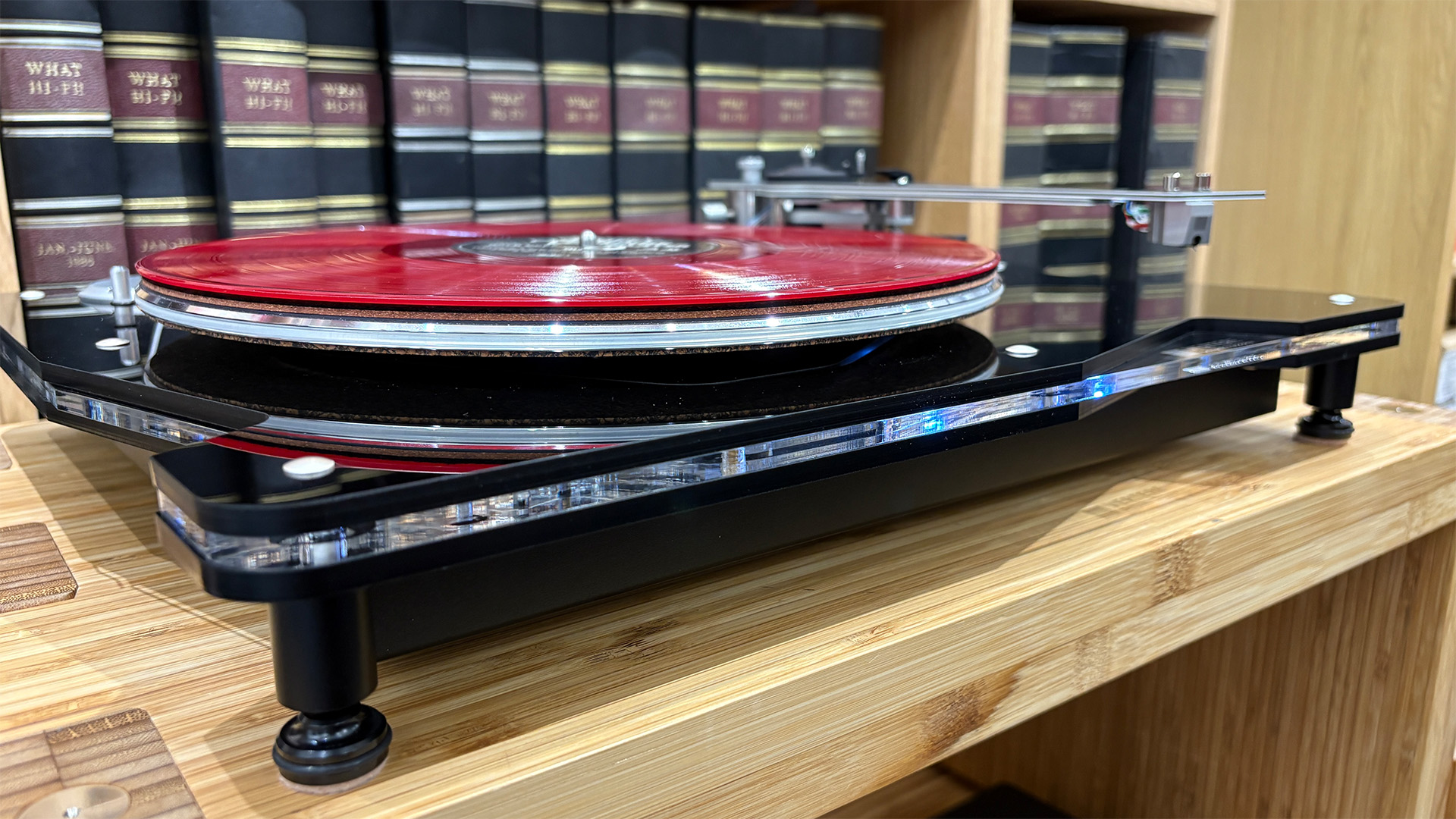
As before, the main bearing comprises a stainless steel spindle sitting on a high-precision tungsten carbide ball in a brass bearing housing – it is made with tight tolerances and finished to a high standard.
The main platter is precision-machined from aluminium, has a bonded layer of PETG (a thermoplastic polymer) and a layer of cork/neoprene/nitrile underneath for further damping – all of which helps to give the record a rigid surface and keep resonances under control.
The DG-X’s distinctive, eye-catching plinth remains a stunning design like no other. Even for those on our review team who prefer more subdued designs, it’s hard not to be impressed by the visually arresting design and glossy mirror finish on our black sample (gloss white and gloss red are also available).
The plinth itself is made of three-layer cast acrylic, with the clear middle layer allowing the internal illumination to (subtly) shine through.
The only thing we’re not too enamoured of is the acrylic dust cover, which doesn’t look or feel as premium for a product at this level.

There is a lot of thought gone into the new DG-X turntable and every element feels expertly engineered and finished to a high quality. That it is also so easy to use is the cherry on top – the deck isn’t fussy in any way. With the cartridge and tonearm set up already, it doesn’t take long to plug it into a partnering system, put a record on and start playing.
We would always recommend that the DG-X, as with any turntable at this level, is placed on a stable, completely level and low-resonance support to get the best performance.
You’ll also need a phono stage, partnering amplifier and speakers of considerable talent. The Vertere Phono-1 MkII L phono stage with the Rega Aethos integrated and ProAc D20R floorstanders are a good starting point, as is a Cyrus 40 AMP (which has a built-in phono stage) and Epos ES14N speakers.
Don’t be afraid to experiment with higher-priced kit, either, as in our experience the Vertere DG model is usually never the weakest link in a system.
We plug the DG-X into our main reference system of the Cyrus Phono Signature/PSX-R2 phono stage, Burmester 088/911 Mk III amplifier and ATC SCM50 speakers, and, with an armful of records, start testing.
Sound
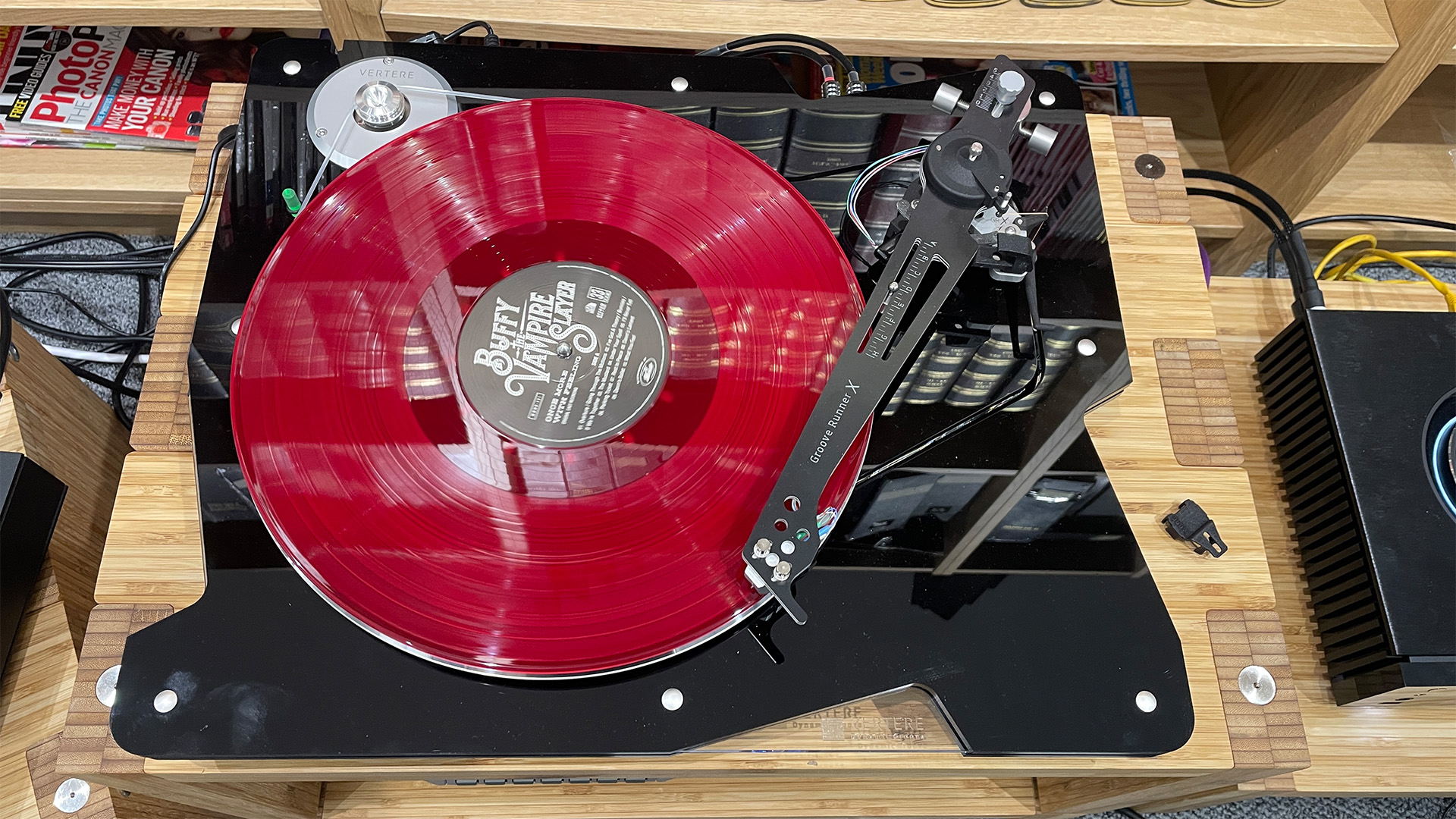
We begin with Nick Cave’s Into My Arms and it is immediately clear that the DG-X retains the same vibrant character we enjoyed so much in the DG-1 S (and the DG-1 before it).
But there is a clear step-up in dynamics, space, stability and muscle.
Nick Cave’s voice is even more grounded and fleshed out with subtler nuances, and the soundscape is bigger and more spacious.
The turntable is an incredibly stable performer and is very definite about every single note it relays. The piano notes are conveyed with rich detail and layered harmonies surrounding each note, but there is a strong sense of solidity as each note is hit, too – it feels more physical and immediate.
Similarly, the driving bassline in SBTRKT’s NEW DORP. NEW YORK is agile, plunges deep and lands with power and precision.
We play the same record on the DG-1 S, and it’s a slightly leaner and more nimble sound, and grabs us by the collar with its spiky, energetic edge. However, the bassline here feels more like a crisp outline – on the DG-X, it has greater texture and depth, while also hitting its mark with much more confidence and stability.
That ‘caffeinated’ edge we first heard with the DG-1 S is calmer with the DG-X, but without the latter losing any of the turntable’s innate energy or rhythmic drive. Instruments and voices interlink with each other in a way that makes cohesive musical sense, and it is always locked into the beat of the song.
There is simply more space to let the music breathe and flourish, with voices and notes allowed to flow more naturally and dynamically with the beat.
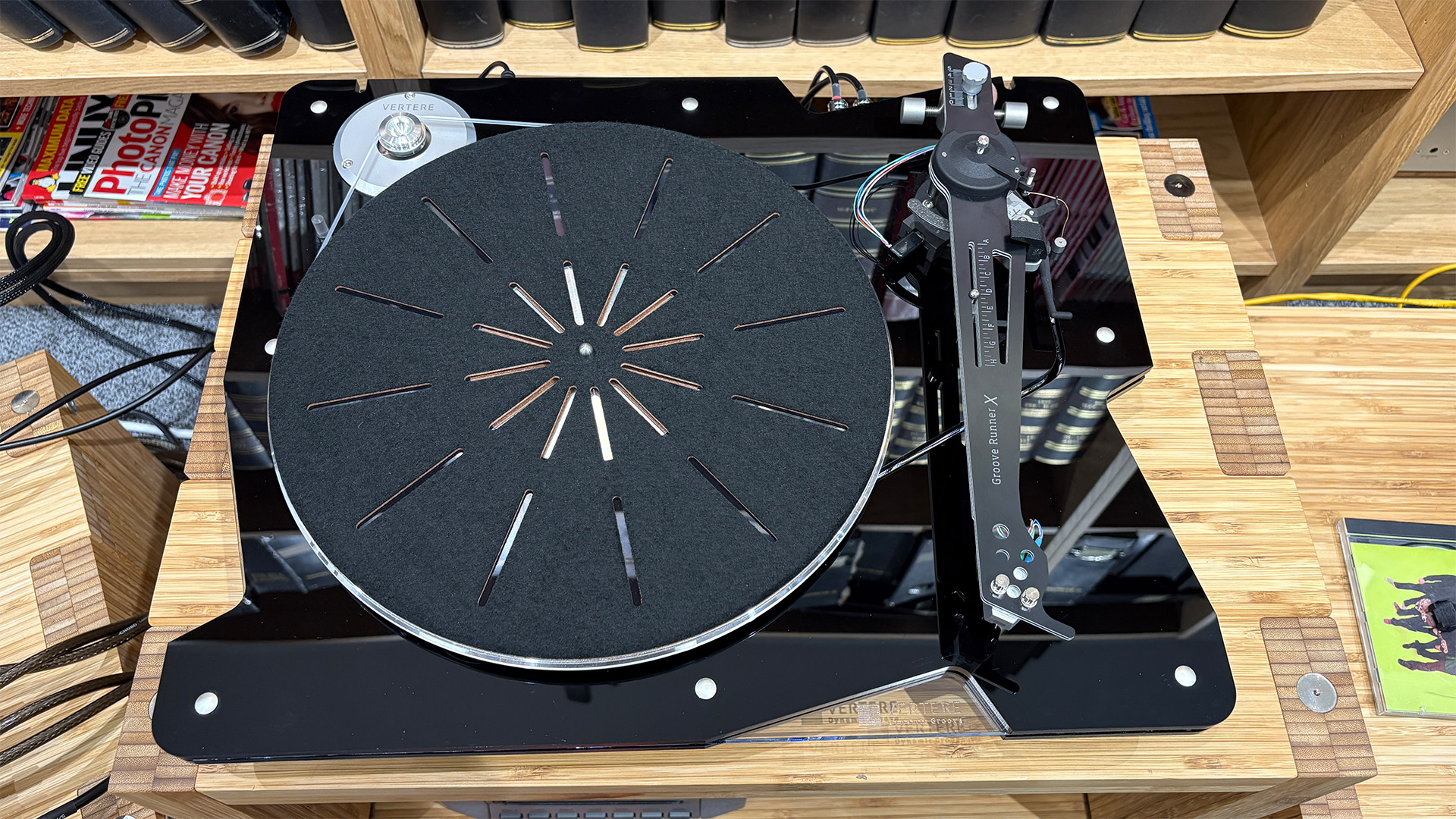
That greater sense of space and control is all the more obvious when it comes to complex orchestral pieces such as Holst’s The Planets, where the majestic, portentous build-up in Saturn, The Bringer Of Old Age is masterfully handled and the orchestra swells to a cosmic crescendo – filling up our large listening room with ease, while also communicating the chaos of the piece.
Tonally, the Vertere is more refined here, with the blaring horns having subtler, more refined highs but never sounding too bright or harsh.
The sparser composition of Mount The Air by The Unthanks shows just how terrific the DG-X’s handling of dynamics – both big and small – is. The airy space in which the folk band are singing in is so much apparent, while quieter moments simply go quieter around them, adding to the sense of drama.
There are subtler dynamics revealed with each bit of pressure placed on instruments, sounding more tuneful, more tactile and more intentional, while their voices sound even purer and more natural.
In comparison, the DG-1 S sounds a little dynamically compressed and more forward. It remains a great deck, but the DG-X simply pushes the performance forward in every aspect, with a more mature, refined and confident evolution.
We end our listening sessions with Michael Jackson’s Bad album, and it’s on Speed Demon that we are thrilled by just how powerful and meaty this turntable can sound. The drum patterns in the chorus are fast, dynamic and muscular. It sounds so physical and visceral in a way that rival turntables can’t quite match.
Verdict
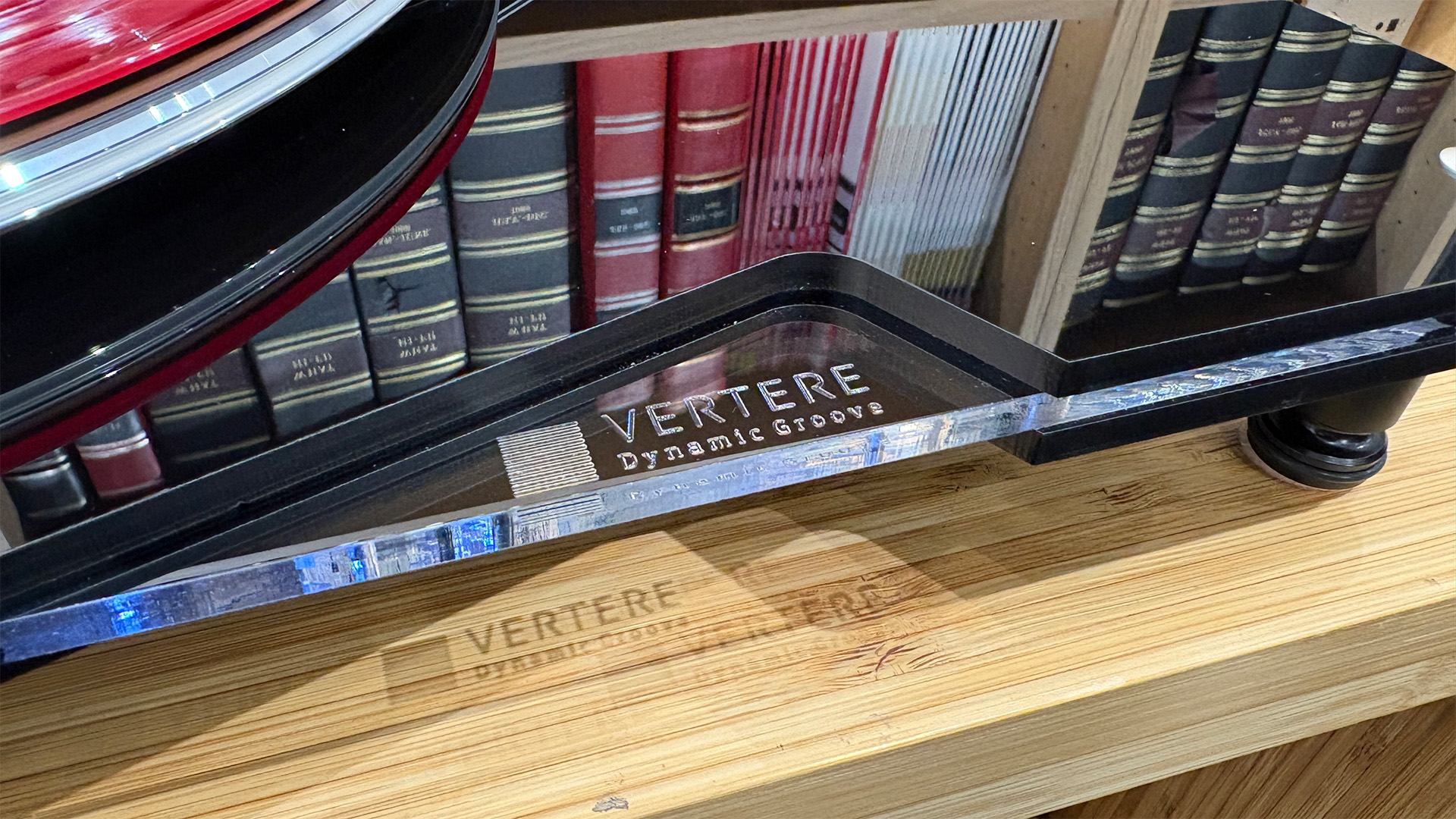
The Vertere DG-X remains a turntable that wants you to enjoy the music rather than analyse every element – but this is a terrific improvement over its predecessor in every way. With greater power, refinement and dynamism, the DG-X transports you into the music you’re listening to, no matter what the genre or recording era.
The engineering improvements and additional elements with this third-generation model are commendable, as is Vertere’s commitment to finding a clever solution that doesn’t hike up the price significantly.
This DG-X package is a tremendously entertaining and accomplished turntable that we wouldn’t hesitate to recommend to anyone looking for a deck at this level.
Review published: 11th August 2025
SCORES
- Sound 5
- Build 5
- Features 4
MORE:
Read our review of the Rega Planar 10
Also consider the VPI Prime 21+
Best turntables: top record players tested by our expert reviewers

Kashfia is the Hi-Fi and Audio Editor of What Hi-Fi? and first joined the brand 13 years ago. During her time in the consumer tech industry, she has reviewed hundreds of products (including speakers, amplifiers, turntables and headphones), been to countless trade shows across the world and fallen in love with hi-fi kit much bigger than her. In her spare time, Kash can be found tending to an ever-growing houseplant collection and shooing her cat Jolene away from spinning records.
- Ketan BharadiaTechnical Editor
You must confirm your public display name before commenting
Please logout and then login again, you will then be prompted to enter your display name.


